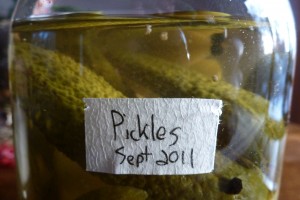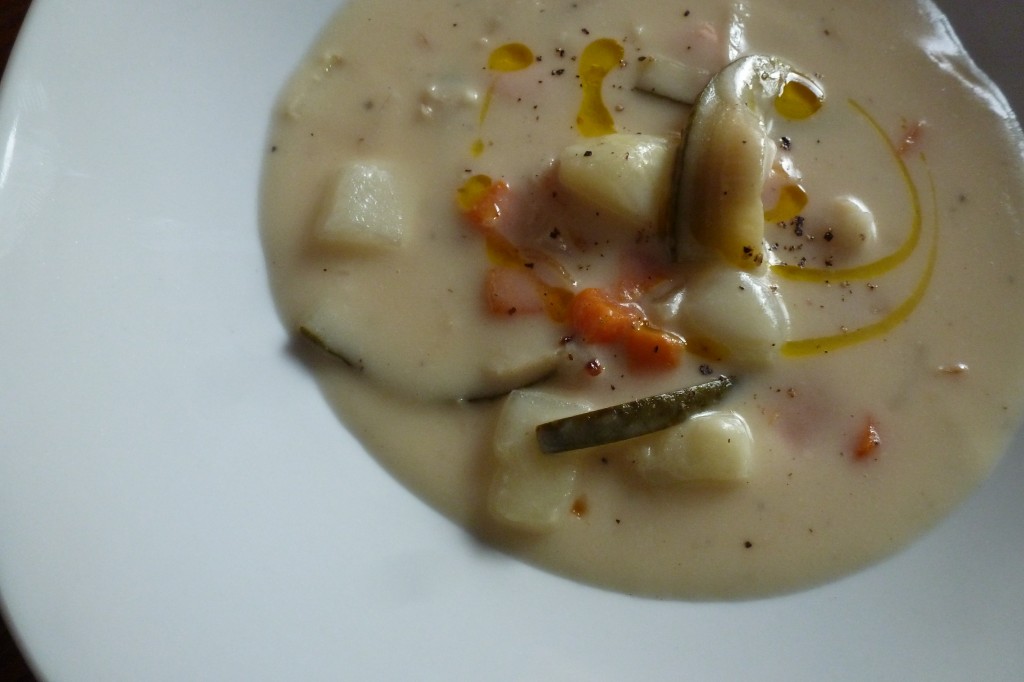 This is exactly the kind of delicious, hearty, ingenious, frugal dish I love. While finely chopped condiments like relish, piccalilli, and jam can be canned on their own, larger slices of vegetables like cucumbers, beets, and carrots require an acidic liquid in which to be preserved. The liquid prevents the growth of aerobic pathogens by keeping air away from the vegetables and filling the space with acid, salt, and sugar. Once the vegetables are gone, this delicious liquid can be used in a number of applications.
This is exactly the kind of delicious, hearty, ingenious, frugal dish I love. While finely chopped condiments like relish, piccalilli, and jam can be canned on their own, larger slices of vegetables like cucumbers, beets, and carrots require an acidic liquid in which to be preserved. The liquid prevents the growth of aerobic pathogens by keeping air away from the vegetables and filling the space with acid, salt, and sugar. Once the vegetables are gone, this delicious liquid can be used in a number of applications.
If this sounds at all gross to you, think about what is in dill pickle juice: water, garlic, black pepper, mustard seed, coriander, bay, cider vinegar, salt, and sugar. The liquid has been cooked out and over the course of a few weeks or months has had time to mellow and balance. It really is fantastic stuff.
My day to day use of pickling liquid is in dressings. Thinning out mayonnaise with a bit of dill pickle juice makes a great dressing for slaw. Thinning crème fraîche with pickled beet and horseradish liquid makes an elegant accompaniment for smoked fish.
I recently came across a traditional Ukrainian dish called kvasivka selians’ka that uses the brine from the sauerkraut crock to make soup:
[The soup] makes a thrify use of the sauerkraut juice that would otherwise be left in the barrel. It seems appropraite for Pentecost celebrations, since by late spring the supply of last year’s sauerkraut would probably have run low.[1]
It may only be November, but I’ve already gone through a few jars of preserves. Today I had some dill pickles out, so I decided to make pickle soup.
For this particular version, I browned carrots, onions, and the garlic cloves from the pickle jar in butter. Then I added all-purpose flour and cooked the roux until aromatic and starting to brown. Then I poured in some of the pickling liquid and whole milk, which I cooked gently until the mixture thickened. At this point I added some boiled, chopped, russet potatoes, and some of the pickles themselves.
Some notes:
- Consume very hot, with a healthy dose of black pepper, and a drizzle of cold-pressed canola. I don’t know why, but the flavour of cold-pressed canola goes extremely well with this soup.
- The exact amount of pickling liquid you use will depend on how acidic the liquid is.
- The starches (the roux and the potatoes) temper the acidity of the pickles.
- Browning the onions and roux brings out their sweetness, which compliments the sweetness of the pickles.
1. Pisetska Farley, Marta. Festive Ukrainian Cooking. ©1991 University of Toronto Press. A very good read.
